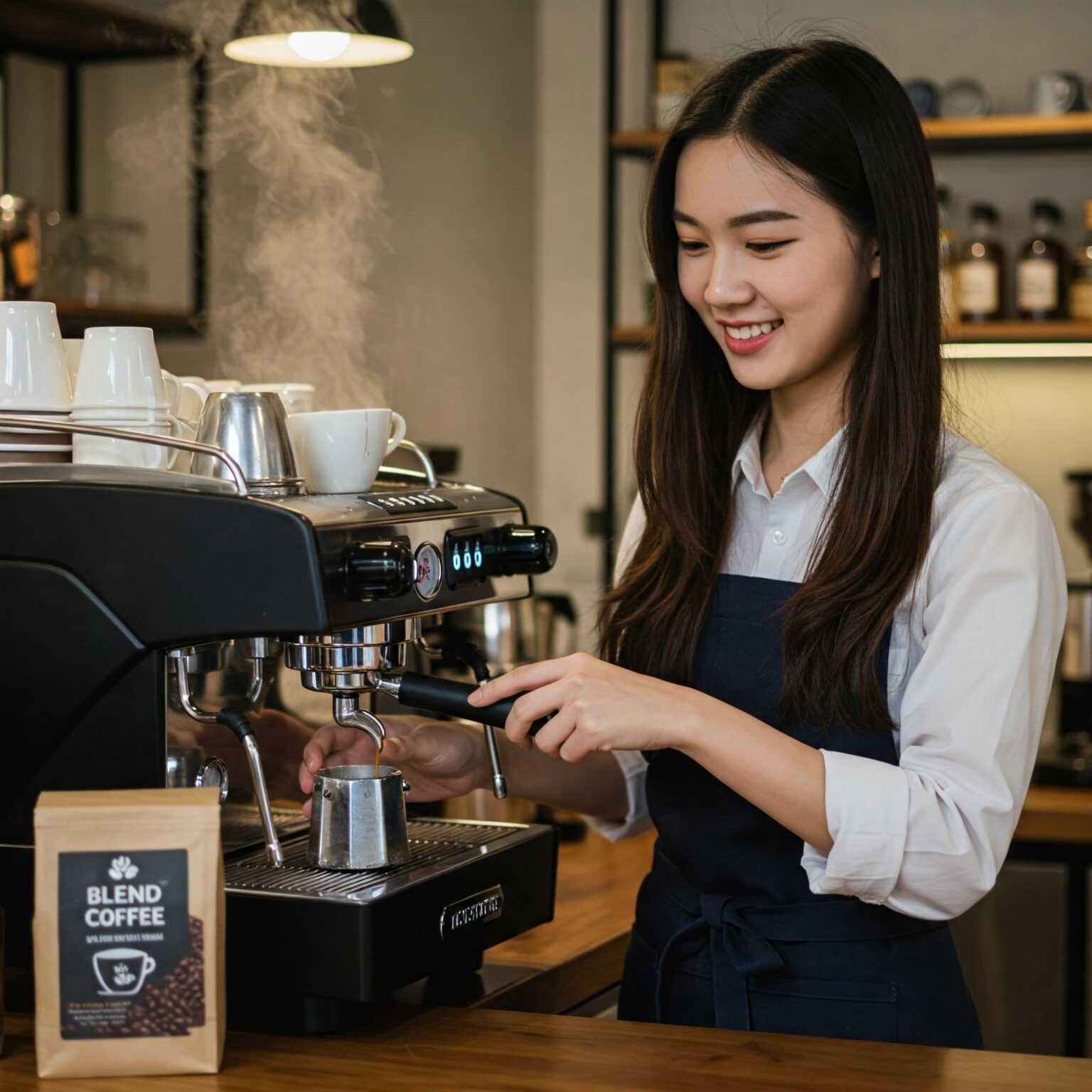Coffee Beans 101: Every Little Thing You Required to Learn About Coffee and Blended Coffee Beans
When it involves coffee, recognizing the nuances of espresso and combined beans can change your daily mug. You'll discover the distinctive features of Arabica and Robusta beans, and how each influences taste and high levels of caffeine web content. From the expanding process to roasting methods, every action contributes in your coffee experience. What makes the best mixture? Let's explore the necessary aspects that contribute to an outstanding mug of coffee.
Comprehending Coffee Beans: Kinds and Ranges
When diving right into the globe of coffee, understanding the types and selections of coffee beans is essential for every single lover. You'll mainly experience two primary varieties: Arabica and Robusta. Arabica beans are understood for their smooth, complicated tastes and reduced high levels of caffeine material, making them a preferred amongst coffee fanatics. On the other hand, Robusta beans load a strike with a stronger, a lot more bitter preference and greater high levels of caffeine levels, typically made use of in coffee blends.
Ethiopian Yirgacheffe supplies bright floral notes, while Colombian beans offer a healthy taste account. By acquainting yourself with these beans and their tastes, you'll raise your coffee experience and make even more educated choices in your brewing journey.
The Growing Process: From Seed to Bean
When you explore the journey of coffee, all of it beginnings with seed option methods that establish the foundation for quality. From there, growing and harvesting play necessary duties in guaranteeing the beans thrive. Finally, handling techniques change those collected cherries right into the coffee beans you like.
Seed Choice Methods
Picking the ideal seeds is vital for generating high-quality coffee beans, as it lays the foundation for the whole expanding procedure. Pay attention to the seed's age and storage problems, as fresh seeds have a tendency to germinate far better. Take into consideration the disease resistance of different selections, as this can significantly affect your yield.
Growing and Harvesting
As you support your coffee seeds into flourishing plants, comprehending the cultivation and harvesting procedure is important for accomplishing the best taste and top quality. Beginning by planting your seeds in well-draining soil, ideally in a shaded location to secure them from straight sunshine.
Hand-picking is often the finest technique to assure only the ripest cherries are picked. Timing is vital; gathering too late or as well very early can affect the taste profile of your beans.

Handling Methods Clarified
As soon as you've harvested your coffee cherries, the next crucial step is processing them to change those vibrant fruits into the beans you'll make. There are 2 major techniques: the damp procedure and the dry process. In the completely dry procedure, you spread the cherries out in the sun to dry, enabling the fruit to ferment and present unique tastes to the beans. On the various other hand, the damp procedure entails getting rid of the fruit promptly and fermenting the beans in water, causing a cleaner preference. After handling, the beans are hulled, arranged, and normally dried out again. Each technique affects the flavor account, so try out both can assist you find your favored brew. Understanding these methods is crucial to appreciating your coffee experience.
Toasting Strategies: How Flavor Is Developed
When it concerns toasting coffee beans, understanding roast degrees is crucial to revealing their unique tastes. Each roasting technique influences the fragrance and improves the flavor advancement process, offering you a richer coffee experience. Let's discover exactly how these aspects integrated to elevate your everyday mixture.
Roast Levels Explained
Roast degrees play an essential role in forming the flavor profile of your coffee. You'll delight in intense level of acidity and fruity notes when you select a light roast. As you relocate to a tool roast, you'll see a balance of sweet taste and complexity, frequently highlighting delicious chocolate or sugar flavors. Dark roasts, on the other hand, provide vibrant, smoky features with less acidity, making them robust and rich. Each level arises from various roasting times and temperature levels, influencing the beans' chemical composition. By understanding these degrees, you can better select a coffee that matches your taste preferences. Experiment with various roasts to find which one reverberates with you, enhancing your total coffee experience and satisfaction.
Influence on Scent
The roast level not only affects the preference of your coffee yet additionally greatly influences its fragrance. Each roasting method releases different unpredictable compounds, shaping how your coffee scents. In addition, the freshness of the beans plays a vital function; freshly baked coffee launches extra aromatic oils, enhancing that tempting scent.
Flavor Advancement Process
As you check out the flavor advancement process, you'll uncover that roasting methods play a critical function in forming the preference profile of your coffee. The roasting temperature and time directly affect the level of acidity, sweetness, and resentment of the beans. Light roasts preserve more of the bean's initial flavors, highlighting flower and fruity notes.
Coffee vs. Blended Coffee: Secret Differences
Coffee and mixed coffee each deal distinct experiences that deal with different preferences and preferences. Espresso is a focused coffee made by forcing warm water through finely-ground coffee beans, causing a rich, bold flavor and a luscious layer of crema on the top. It's frequently delighted in as a shot or used as a base for drinks like lattes and cappuccinos.
On the various other hand, mixed coffee combines various beans from various areas, producing a much more balanced flavor profile. You'll typically find blends that highlight sweet taste, level of acidity, or body, making them versatile for various developing approaches. While coffee focuses on strength, combined coffee might offer a wider range of flavors that can transform with each sip.
Ultimately, your choice between coffee and combined coffee come down to your personal choice. Whether you hunger for a fast shock or a leisurely cup, both alternatives have something tasty to provide.

Developing Approaches: Opening the Perfect Cup
When it involves brewing coffee, finding the right technique can transform your experience and elevate your cup. Each brewing strategy has its one-of-a-kind appeal and can considerably affect your coffee's flavor and scent. For example, making use of a French press allows you to take pleasure in a full-bodied and rich mixture, while a pour-over technique offers a tidy, intense mug with distinct tastes.
If you choose espresso, buying a top quality device can help you understand the art of drawing shots. Alternatively, for ease, a single-serve sheathing system provides speed without giving up taste.
Do not fail to remember regarding cool brew, which delivers a smooth, much less acidic coffee suitable for warm days. Experiment with different approaches to uncover what reverberates with your taste buds.
Sampling Notes: Identifying Taste Profiles
Exactly how can you really value your coffee if you don't know what tastes to look for? Tasting notes are your guide to understanding the complicated globe of coffee. When you sip, pay attention to the initial flavors that strike your taste. You may spot fruity notes, like berry or citrus, or possibly a nutty undertone. As you proceed to taste, notice just how the flavors advance-- this is referred to as the "coating." Some coffees could leave a chocolatey or sugar aftertaste, while others may have a brilliant, clean surface.
Take into consideration the body of the coffee, as well; is it airy Single Origin Espresso and light or thick and syrupy? Do not fail to remember level of acidity; a bright acidity can include spiritedness, while a reduced level of acidity may offer a smoother experience. By determining these flavor accounts, you'll deepen your connection with each cup, making coffee tasting a delightful trip of discovery.

Tips for Choose and Storing Coffee Beans
Saving and choosing coffee beans correctly can considerably improve your developing experience. Start by selecting high-quality beans that suit your taste. Search for quality; beans roasted within the last two weeks are ideal. Inspect the roast date on the packaging, and purchase from regional stores or trustworthy roasters.
As soon as you have your beans, save them in a closed container to avoid direct exposure to wetness, air, and light. A dark, amazing location functions best, so avoid keeping them in the fridge or freezer, as this can introduce moisture. Just grind the quantity you require to maintain quality; entire beans preserve flavor longer than pre-ground coffee.
Last but not least, try to use your beans within two to 4 weeks after opening up for peak preference. Adhering to these tips will certainly guarantee your coffee remains enjoyable and flavorful, elevating your everyday mixture to brand-new elevations.
Regularly Asked Concerns
For How Long Do Coffee Beans Remain Fresh After Roasting?
Coffee beans stay fresh for concerning 2 weeks after roasting - SOE. You should save them in an impermeable container, away from light and moisture. After that, their flavor and scent begin to diminish substantially

Can I Mix Different Coffee Bean Varieties?
Absolutely, you can blend various coffee bean varieties! Explore blends can enhance flavors and develop a distinct taste account. Just ensure to stabilize the staminas and characteristics of each range for the best outcomes.
What Is the Ideal Grind Size for Coffee?
For espresso, you'll desire a fine work size, about the texture of salt. This enables suitable extraction, causing a rich, tasty shot. Experiment a little bit to discover what matches your preference best!
Exactly How Does Altitude Affect Coffee Bean Flavor?
Elevation impacts coffee bean flavor by affecting the growth rate and chemical make-up. Higher altitudes lead to slower maturation, which enhances acidity and complexity, offering your coffee a vivid and special taste you will not neglect.
Exist Decaffeinated Variations of Espresso Beans?
Yes, there are decaffeinated variations of coffee beans. You can enjoy a rich coffee flavor without the caffeine kick. Just seek "decaf" blends at your local coffee bar or specialty shop.
Coffee Beans 101: Every Little Thing You Required to Know About Espresso and Blended Coffee Beans.
When diving into the globe of coffee, recognizing the types and varieties of coffee beans is necessary for every fanatic.When it comes to roasting coffee beans, recognizing roast levels is vital to exposing their one-of-a-kind flavors. Coffee is a focused coffee made by compeling hot water through finely-ground coffee beans, resulting in an abundant, bold flavor and a velvety layer of crema on top.On the various other hand, mixed coffee incorporates numerous beans from different areas, developing a more balanced flavor account.
Comments on “Matching Food and Desserts with SOE Single Origin Espresso”